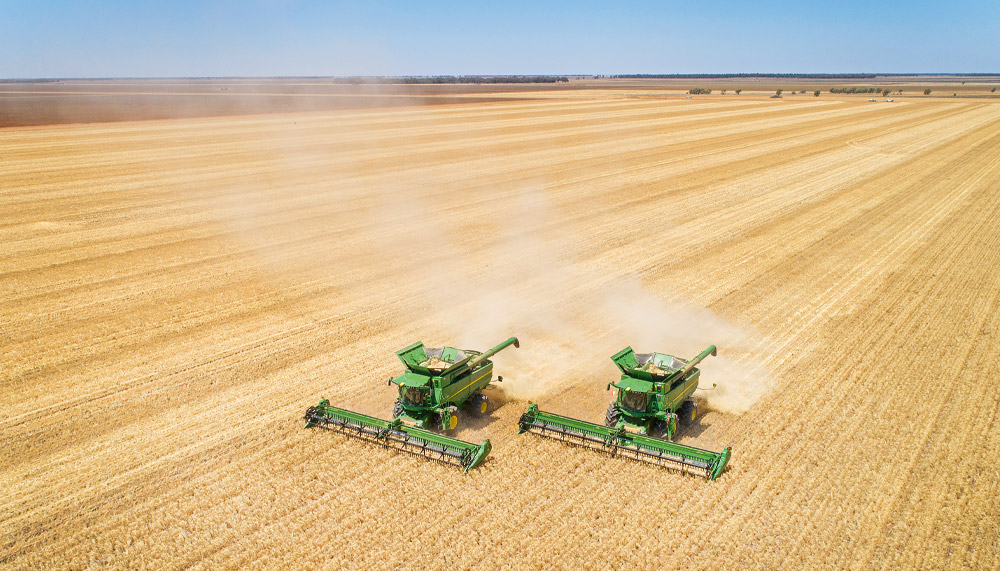Australian farmers remain positive despite unprecedented challenges.
Story + Photo Nathan Dyer
Sixty kilometres north of Goondiwindi, in drought-affected south-west Queensland, grain grower Nick Benson is preparing to crop 3600ha of wheat, barley and chickpeas. “I don’t like to call it too early, but we’re a lot more optimistic than last year, put it that way,” says the third-generation cropper.
Nick, who farms with wife Katie and three young children on the family’s property OK station, says last year’s harvest was simply a seed retrieval process after the driest growing season on record. But with rain in each month this year, he says the tide looks to have turned, with the property recording 350mm of rain by mid-April, compared to just 100mm all of last year. “We’re back in business, there’s no doubt about that,” Nick says. “We’ve still got a long way to go, but we’re ready to catch up and make up for lost time.”
Nick’s cautious optimism is reflected across the country. Above average rainfall in northern and eastern Australia, particularly in drier parts of Queensland and New South Wales, is expected to ramp up winter crop plantings, while panic buying, and uncertainty among some of the world’s largest grain exporters, has seen a surge in some commodity prices. On the livestock front, demand from restockers has seen sheep and cattle prices at high levels. Those factors, coupled with a weak Australian dollar, has led to a resurgence in national farmer confidence.
The latest Rabobank Rural Confidence Survey showed one of the biggest upswings in the survey’s 20-year history, rising to its highest level in almost five years. Released in March, the quarterly survey found rising farmer sentiment in all states, particularly in Queensland and NSW, with 57% and 48% of farmers surveyed in those states expecting conditions to improve in the coming 12 months.
This story excerpt is from Issue #131
Outback Magazine: June/July 2020










